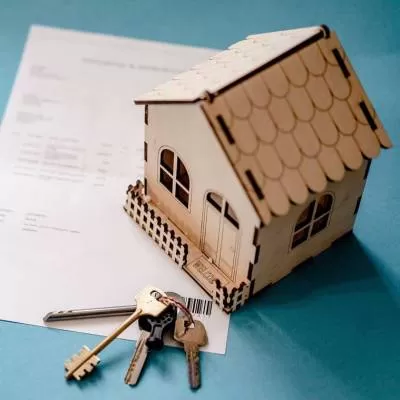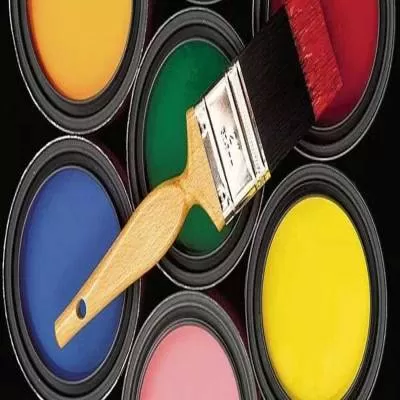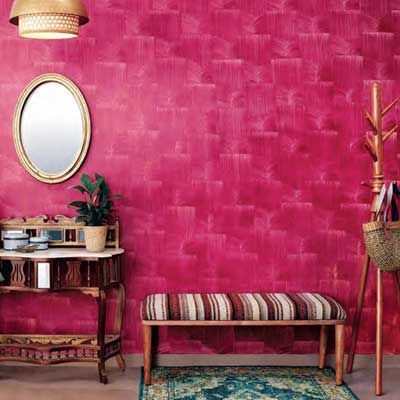- Home
- Building Material
- Paint
- Polished and Plugged!
Polished and Plugged!
In the 43rd of a series of clip-and-keep practical construction tips, Engineer Jagvir Goyal discusses aspects of polishing woodwork and electrification.
1. Here are some tips on polishing woodwork. The same can be applied to your furniture too. To prepare solution for polishing, look for pure shellac (laakhdana). It is best if the packet/bag from which it is being given to you has the IS 16 mark on it. Dissolve it in methylated spirit. For 1 kg of shellac, you need about 7 litre of spirit. Otherwise, readymade polish is now available in the market. Melamine polish costs around Rs 180 per litre while PU polish costs around Rs 320. PU polish for exterior surfaces is about Rs 380 per litre.
2. For thinning readymade polish, use thinners supplied by the same manufacturer. There are separate thinners for polish applied by brush and polish applied by spray method. For PU polish, PU thinner must be used.
3. For polishing woodwork, choose an expert polish painter. Mostly, painters avoid applying sandpaper to the wood and try to satisfy the house builder by bringing shine to the polish. These days, Touchwood by Asian Paints is used as a quick solution to add shine to furniture and woodwork. Don’t give Touchwood to the polish painter until he has finished all other work involved in polishing. Touchwood is actually a sort of polyurethane polish, as expensive as melamine polish, and its main emphasis is on shine.
4. For best polish results, apply No. 180 sandpaper to the wood thoroughly and dust off. While applying sandpaper, ask the painter to apply it along the grain and not against it. Next, apply wood stain on the wood with a pad of muslin cloth; apply along the grain and not across. Wood stains are transparent materials whose application helps in getting the desired shade of wood. You can get teak, mahogany, natural veneer, rosewood, redwood or any other of about 20 shades available. There are different wood stains for exterior and interior surfaces. Use wood stain thinner to dilute it in case you want a lighter tone. Allow the wood stain to dry for 45 minutes. Now apply the chosen polish over it. Don’t allow the wood stain to remain without polish for a long time. To apply polish, a pad of muslin cloth, a brush or spray can be used. Use corresponding thinner for polish if required. Don’t use more than 15 to 20 per cent thinner. When applied by hand, ask the man to rub the polish hard on the wood in a circular motion.
5. While painting or polishing doors and windows, don’t forget to paint or polish the top, side and bottom edges of shutters. The hardest part to paint or polish is the bottom edge of door shutters owing to insufficient space. Therefore, paint or polish the bottom edges of door shutters to the maximum possible extent before hanging them in position. Similarly, don’t forget to paint the putty around glass panes. Here, ensure the glass panes don’t get painted while painting the putty.
6. Wherever you have applied paint on doors and windows and you want to change it to a transparent polish finish, you have to burn the paint with blowlamps. If doing so, ensure it is done from the bottom upwards and not the top downwards. Remember that the flame has to be used just to soften the paint and not completely burn it. Ask the painter to use a knife side by side to strip the softened paint. Always keep the flame away from glass panes.
7. Next, let’s discuss the electrification of your building. Plan the electric wiring of your house carefully. Get proper drawings made for it. Decide in advance the location of switchboards. Once your house plans are ready, you can decide the location
of all your electrical appliances. Make provision for power plug points and five-ampere points accordingly. Similarly, light, fan and call bell points can be planned.
8. Provide room switchboards near entrances as they are easy to locate and don’t interfere with the artwork. If this isn’t possible, switches with glowing lights can be easily located at night. Make provision for security gadgets. All this planning will help you run cables through concealed conduits.
9. Let there be plenty of circuits in your electric wiring drawings. Plan a separate fuse for each power point. Never run the electric wires, data cables (for Internet) and voice cables (for telephones) through the same conduits. These invite a lot of disturbance if bunched with electric wires. If you want to install an aquarium, plan a separate switchboard for it. An aquarium requires many sockets to run filters, air pumps, lights and water heaters.
10. While planning the lighting of your house, keep the entrance area well lit. Ensure both the house number and nameplate are well illuminated. Also plan the lighting of the garden/lawn and terrace to create an artistic effect rather than just illuminating these areas. Add a few back-lighters behind plants and some sockets to run fans, coolers or music systems. See that sockets provided have shutters to avoid any short circuits in the rainy season.
11. Provide lights hidden behind the plants in your garden for an attractive and festive look. If you have a small wooden pathway or bridge in the garden, light up its edges with a strip of lights. Light up borders, steps, slopes, water pool and slippery spots. Avoid sodium vapour lamps and halogens. Incandescent lamps look beautiful but use them sparingly as they are not energy-efficient; use mercury vapour lamps. On special occasions, add candles and oil lamps to the garden. But position them in places where there is no threat of fire. If you have a waterfall or fountain in your garden, provide underwater lights. These are waterproof. Throughout the garden lighting, keep in mind that there should be no shocks or short-circuiting during the rains. No wire should run without a conduit. Also, all conduits should be buried in the ground so they don’t get damaged during normal gardening.
In the 43rd of a series of clip-and-keep practical construction tips, Engineer Jagvir Goyal discusses aspects of polishing woodwork and electrification. 1. Here are some tips on polishing woodwork. The same can be applied to your furniture too. To prepare solution for polishing, look for pure shellac (laakhdana). It is best if the packet/bag from which it is being given to you has the IS 16 mark on it. Dissolve it in methylated spirit. For 1 kg of shellac, you need about 7 litre of spirit. Otherwise, readymade polish is now available in the market. Melamine polish costs around Rs 180 per litre while PU polish costs around Rs 320. PU polish for exterior surfaces is about Rs 380 per litre. 2. For thinning readymade polish, use thinners supplied by the same manufacturer. There are separate thinners for polish applied by brush and polish applied by spray method. For PU polish, PU thinner must be used. 3. For polishing woodwork, choose an expert polish painter. Mostly, painters avoid applying sandpaper to the wood and try to satisfy the house builder by bringing shine to the polish. These days, Touchwood by Asian Paints is used as a quick solution to add shine to furniture and woodwork. Don’t give Touchwood to the polish painter until he has finished all other work involved in polishing. Touchwood is actually a sort of polyurethane polish, as expensive as melamine polish, and its main emphasis is on shine. 4. For best polish results, apply No. 180 sandpaper to the wood thoroughly and dust off. While applying sandpaper, ask the painter to apply it along the grain and not against it. Next, apply wood stain on the wood with a pad of muslin cloth; apply along the grain and not across. Wood stains are transparent materials whose application helps in getting the desired shade of wood. You can get teak, mahogany, natural veneer, rosewood, redwood or any other of about 20 shades available. There are different wood stains for exterior and interior surfaces. Use wood stain thinner to dilute it in case you want a lighter tone. Allow the wood stain to dry for 45 minutes. Now apply the chosen polish over it. Don’t allow the wood stain to remain without polish for a long time. To apply polish, a pad of muslin cloth, a brush or spray can be used. Use corresponding thinner for polish if required. Don’t use more than 15 to 20 per cent thinner. When applied by hand, ask the man to rub the polish hard on the wood in a circular motion. 5. While painting or polishing doors and windows, don’t forget to paint or polish the top, side and bottom edges of shutters. The hardest part to paint or polish is the bottom edge of door shutters owing to insufficient space. Therefore, paint or polish the bottom edges of door shutters to the maximum possible extent before hanging them in position. Similarly, don’t forget to paint the putty around glass panes. Here, ensure the glass panes don’t get painted while painting the putty. 6. Wherever you have applied paint on doors and windows and you want to change it to a transparent polish finish, you have to burn the paint with blowlamps. If doing so, ensure it is done from the bottom upwards and not the top downwards. Remember that the flame has to be used just to soften the paint and not completely burn it. Ask the painter to use a knife side by side to strip the softened paint. Always keep the flame away from glass panes. 7. Next, let’s discuss the electrification of your building. Plan the electric wiring of your house carefully. Get proper drawings made for it. Decide in advance the location of switchboards. Once your house plans are ready, you can decide the location of all your electrical appliances. Make provision for power plug points and five-ampere points accordingly. Similarly, light, fan and call bell points can be planned. 8. Provide room switchboards near entrances as they are easy to locate and don’t interfere with the artwork. If this isn’t possible, switches with glowing lights can be easily located at night. Make provision for security gadgets. All this planning will help you run cables through concealed conduits. 9. Let there be plenty of circuits in your electric wiring drawings. Plan a separate fuse for each power point. Never run the electric wires, data cables (for Internet) and voice cables (for telephones) through the same conduits. These invite a lot of disturbance if bunched with electric wires. If you want to install an aquarium, plan a separate switchboard for it. An aquarium requires many sockets to run filters, air pumps, lights and water heaters. 10. While planning the lighting of your house, keep the entrance area well lit. Ensure both the house number and nameplate are well illuminated. Also plan the lighting of the garden/lawn and terrace to create an artistic effect rather than just illuminating these areas. Add a few back-lighters behind plants and some sockets to run fans, coolers or music systems. See that sockets provided have shutters to avoid any short circuits in the rainy season. 11. Provide lights hidden behind the plants in your garden for an attractive and festive look. If you have a small wooden pathway or bridge in the garden, light up its edges with a strip of lights. Light up borders, steps, slopes, water pool and slippery spots. Avoid sodium vapour lamps and halogens. Incandescent lamps look beautiful but use them sparingly as they are not energy-efficient; use mercury vapour lamps. On special occasions, add candles and oil lamps to the garden. But position them in places where there is no threat of fire. If you have a waterfall or fountain in your garden, provide underwater lights. These are waterproof. Throughout the garden lighting, keep in mind that there should be no shocks or short-circuiting during the rains. No wire should run without a conduit. Also, all conduits should be buried in the ground so they don’t get damaged during normal gardening.
























